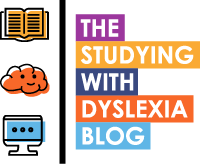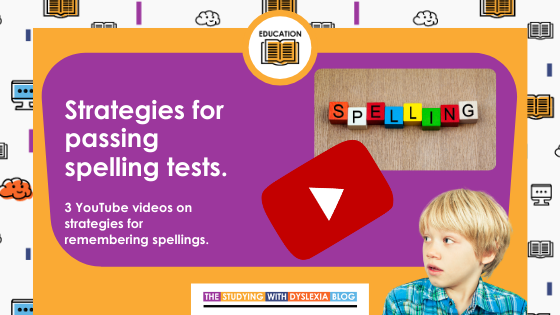What can we do to help our kids with the process of learning spellings? Why don’t we make it as fun as possible? Check out these videos that could help give you some inspiration as you support a child who is learning spellings.
The other day, I asked the members of Parenting Dyslexia about how they felt about spelling tests. Whilst I don’t want to give away any confidences, here is a list of the key themes that came up in the comments:
Frustrated,
Teaching my child to fail,
Pointless and utterly humiliating,
Stressful,
Anxiety and panic attacks,
Destroys the confidence of children.
These are strong feelings and understandable too. Clearly the emotions behind being dyslexic and facing spelling tests are huge.
Currently exams at GCSE level also include assessment for spelling and grammar (SpaG marks) and so even if you know a subject inside and out, if your spelling is off, you can’t get 100%.
Amazingly, once at under-graduate level or within the workplace, challenges with spelling do not seem so problematic as there are ways to check spellings built into every day IT solutions be they mobile phones, laptops and tablets. Microsoft Word 365 will check your grammar and spelling for you.
I believe that we do need to build up literacy skills and spellings are a part of this process, but the current education system somehow seems to make this a harrowing process for dyslexic learners.
So what can we do as parents and teachers to make the impact more positive and the learning process more fun?
Recently the touch-typing tech company, Kaz-Type announced that they are providing a way for parents and teachers to use their software to help with learning spellings using the multi-sensory process of touch-typing. The aim would be that dyslexic learners can learn their spellings using ‘muscle-memory’ built up from using a keyboard. Either the parent or teacher can feed any given spelling list into the software so that the child can practise not only spelling these words but also their typing skills. The combination of using the fingers in a tactile way and spelling serves to build better links in the brain so to be able to recall spellings more effectively.
Building connections in the brain.
We all learn in different ways, but it is generally thought that multi-sensory learning i.e using as many of the senses within the learning process (sight, touch, smell, hearing, taste) can help to build vital connections within the brain that empowers memory and recall.
Dr Gavin Reid shares his thoughts on multi-sensory learning.
“There is a considerable body of evidence that intervention strategies for teaching reading and spelling skills to dyslexic children should be both multisensory and phonic and that this type of teaching can benefit most children in any class at most stages.”
Three videos that outline strategies for a multi-sensory approach to learning spellings.
This first video communicates a strategy for memory that you will probably already be aware of. It’s use of a storyline to get spellings together, in this case, B-E-A-U-T-I-F-U-L is really simple to try and you can have a lot of fun with it. I would add to this and say that you could even draw the story line out too which would add a further multisensory dimension.
I really love this video from Dyslexia Scotland and their trainer, Sharon Hall who has absolutely packed this video with loads of ways of making learning spellings fun using a multi-sensory approach. For me the take-away is simple, use whatever resources you have to hand and see how you can use them to play with words and spellings.
This is a slightly older video from the British Dyslexia Association with Sally Leach demonstrating the Spelling Shield. Personally, I like the simplicity of this approach and how it uses movement in conjunction with writing out the words to help remember spellings.
Remember every child learns differently.
I want to finish this article with a quick word to say that these videos have some great ideas to try, but your child may or may not engage with them. As a significant adult in a child’s life we need to take the lead from the child and be ready to try lots of different ideas so as to see what works. These videos simply add ideas to your toolbox of ideas that you can draw from.
So what are your thoughts?
Please tell me about your experiences of supporting a child with their spellings in the comments below.
If you like the content in my articles, then please support my work by subscribing using the form below too.




